Well forgotten new: years later, the successor to MikroTik RB2011 comes out
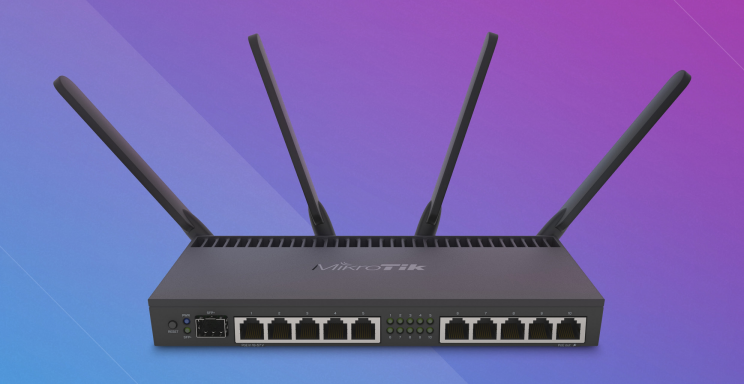
It is no secret that in many small firms, apartments and homes of users routers of the RB2011 family still work. At the time of its appearance, the present old men were a rather unique (and controversial) proposal, but after years it became clear that the series, what is called, "went to the people", actually became the flagship of the SOHO-segment Mikrotik.
Years went by, the throughput of channels grew. Users wanted more, and in 2015, MikroTik announced new devices of the RB3011 family , which were to replace veterans.
However, in this place something went wrong.
In the summer of 2015, the RackMount (RM) version of the RB3011 router became widely available from distributors. Characteristics and price in those times were out of competition: an ARM processor with a frequency of 1.4 GHz and two cores, coupled with a gigabyte of memory and the promised (and unfulfilled) hardware acceleration of IPSec, ten gigabit ports, and so on ...
Only one thing caused bewilderment - the versions in the desktop package, including the version with the Wireless module, did not appear on the market, although they were presented in PDF specifications and
MikroTik product catalogs
. Topics with a question like "when will the RB3011 with WiFi go on sale?" appeared on the official forum regularly, but remained unanswered.
And now, after years, you can accurately answer this question. Never.
The first signs of the public appearance of the 4011 family were leaked FCC photos of one of the two models.
Speaking of models. There are only two of them - with and without a wireless network.
The model with Wi-Fi has a part number RB4011iGS + 5HacQ2HnD-IN . (Try to understandwithout a hundred grams without decoding what the Latvians had in mind.)
The model, devoid of wireless interfaces, has a simpler part number: RB4011iGS-RM , as well as an interesting feature - a universal case. This case can be mounted
in a 19 "rack, or just lie on the table (rack mounts are included). It is a logical decision.
So, what is reliably known about these devices:
| CPU | Annapurna Lab (now owned by Amazon) Cortex A15 Alpine AL21400 1.4 GHz, 4 cores. The same processor is used in the model RB1100AHx4 |
| Ram | 1 GB, in the sample sample two Nanya chips are soldered. |
| Flash memory | 512 MB in sample sample implemented on WinBond chip |
| Network ports | 10 Gigabit Ethernet ports, 1 SFP + |
| Switch Chips | Realtek RTL8367SB. Similar chips are used in the model RB1100AHx4 |
| Wireless interfaces | 2.4 GHz - R11e-2HnD, 2 streams, 802.11n 5 GHz - QCA-9984, 4 streams, 802.11ac (MU-MIMO and Beamforming are not supported, alas) |
| Antennas | 4 pieces, gain 3dbi. Two antennas work on both bands, two more - only 5 GHz. |
| Poe | Traditionally for MikroTik, the first Ethernet port is PoE in, the last port (10th) is PoE out. |
| Power consumption | 23W, when powered from a router via PoE, it can reach up to 44W. |
| Supply voltage | 12-57V through the adapter, 18-57V through PoE. PoE output voltage is the same as the input (PoE passthrough) |
| Power Supply | External power supply notebook type 24V @ 2.5A |
| Console | Yes, RJ45 serial port |
| operating system | RouterOS level 5 |
| Retail price | RB4011iGS + 5HacQ2HnD-IN: $ 249 (17.000 rub.) RB4011iGS + RM: $ 199 (13.500 rub.) |
Of particular interest are the declared specifications of wireless modules in terms of power for the model RB4011iGS + 5HacQ2HnD-IN:

Just in case, I will ask the future users of the device in advance not to unscrew the power. Powerful Wi-Fi is bad for many reasons, but their description is beyond the scope of this article.
We can take a closer look at the model with the wireless modules.
The body is made of metal only partially - the lower part of the body is plastic. In the RB2011 this was not. It looks very controversial, for what reason it is done so - it remains only to guess. But the top cover is made of metal for good reason, but more on that later.
This is what the front router looks like:
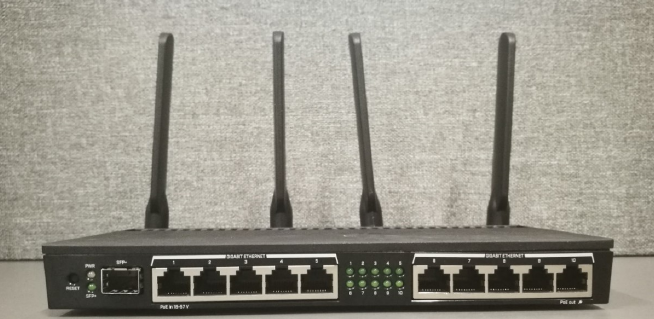
As before, the Ethernet ports are grouped into five pieces. Port indicators are in the middle. On the left is the SFP + port, the button and ... everything.
For some reason only for them, MikroTik engineers did not embed a USB port into this model.
I know that people often use 4G-modems for the backup line, and expanding the internal memory is also necessary. By my guess, the USB port was not done to avoid “cannibalizing” another device - RB1100AHx4 Dude Edition. In fact, it would be possible to plug in a cheap USB-flash and get an analog RB1100AHx4 Dude Edition for $ 150 cheaper.
Yes, there is no custom indicator "USR" either.
View from above:
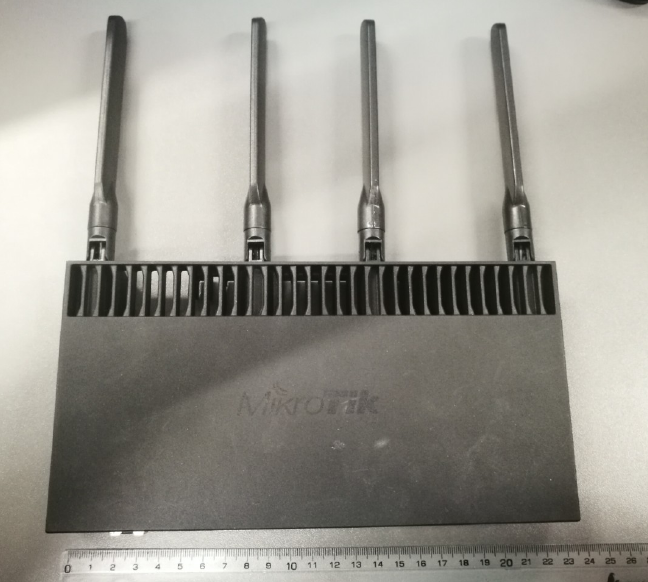
It can be seen that, unlike the RB2011 series, the device lost one of its recognizable features - the LCD screen. I can not say it is bad or good. Just take note.
Back view:
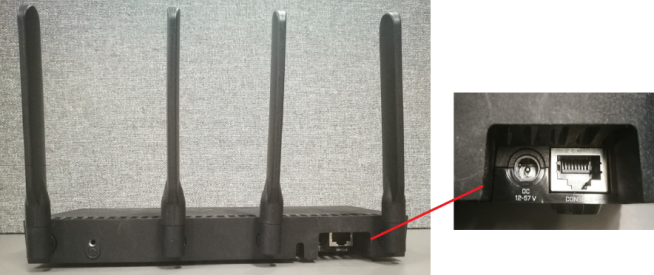
The console port lurked in the recess, next to the round power jack.
Outside, in general, everything is clear, now you can look inside.
This is the top side of the board with the screens removed and an 802.11n pci-e card:
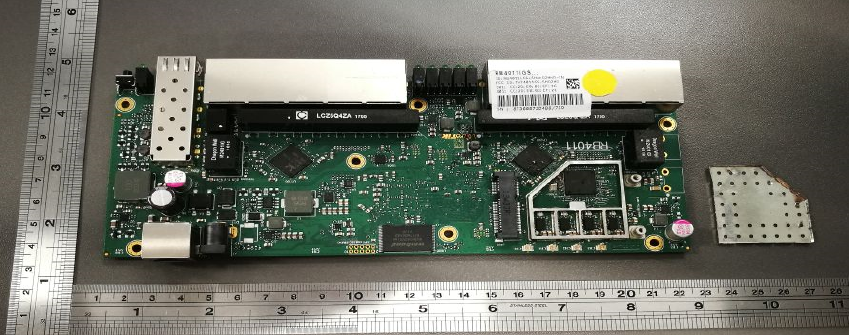
Conditionally top. Because it is lower. In fact, everything is simple - the board in the router is set upside down. And this is done for a reason.
The bottom of the board. Which is actually the top one:
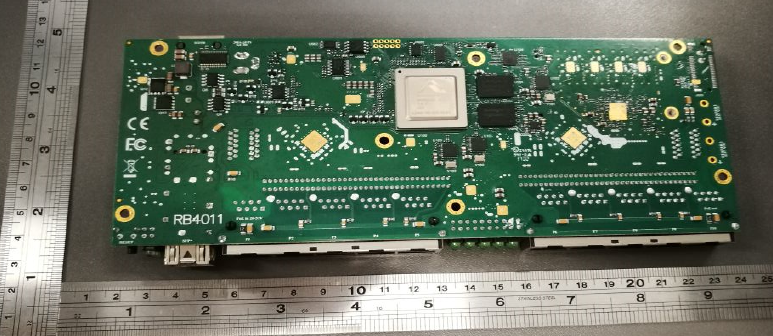
Pay attention to the processor. As is clear from the specification above, the device is quite “voracious” in terms of nutrition, so there will be plenty of heat. The processor was specially carried to the upper side of the board - the upper metal part of the case is used as the radiator.
This concludes an overview of the external and internal world of the new device.
And last, but not the most uninteresting :-)
The results of internal testing of the performance of the device by the company Mikrotik. Similar results for others can be found on the official website, anyone can compare the performance:
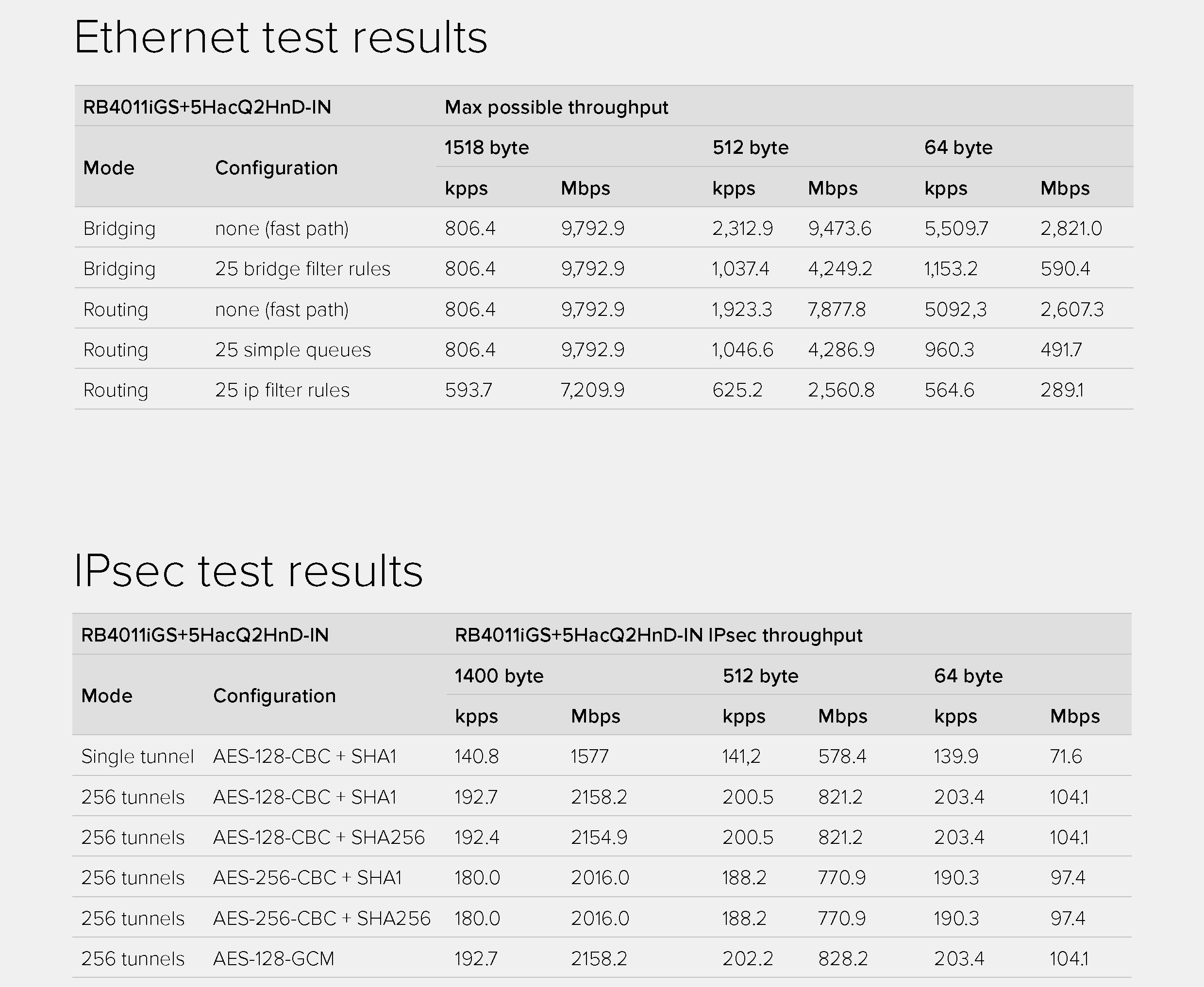
What can I say in conclusion? As a router, in the version without Wi-Fi, apparently - a great thing. Anyway - cheaper RB1100AhX4. As a device for final use in the version with Wi-Fi - it is very ambiguous.
Spoons of tar meet and not one. First generation 802.11ac, without MU-MIMO and Beamforming. Maybe it will be added in future versions of RouterOS, but this possibility should be treated skeptically - on the official forum all questions about MU-MIMO in particular, and 802.11ac Wave 2 in general remain unanswered for a couple of years. But still, the second half of 2018 is in the yard, I don’t want to change an expensive device with the mass appearance of customers with Wave 2 “on board” in a year and a half.
The absence of a USB port is also extremely disappointing - you can forget about the organization of any, but you can forget the backup channel, as well as the possibility of inexpensive local network organization and Internet access in general in places where nothing but cellular communication has been delivered yet. As well as connecting external drives.
Update: The flowcharts of the RB4011 family have appeared, the block diagram for the model with wireless modules is presented below:
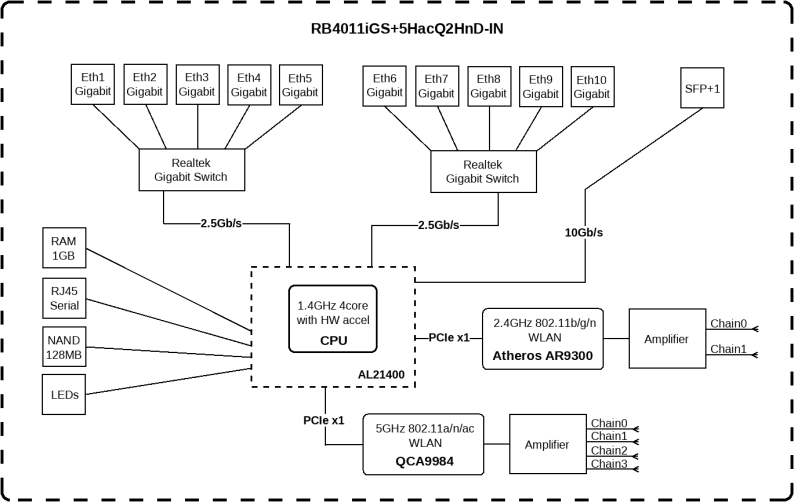
I am glad that the “honest” 10Gbit comes to SFP +. At the same time, it can be seen that the * 011 series never got rid of its shortcoming, and the switches are connected by 2.5 Gbps lines, so using this device as a non-blocking switch will not work. On the other hand, for its segment and destination is enough. Serious business will take more "enterprise" solutions, and SOHO ... And what about SOHO? In any case, it is better than the "home" D-Link.
Ambiguous device, in general.
PS Just a couple of hours ago, both models appeared on the official site Mikrotik. The advertised price for RB4011iGS + 5HacQ2HnD-IN is $ 249 (~ 17.000 rubles), for RB4011iGS + RM - $ 199.
